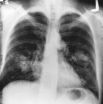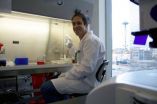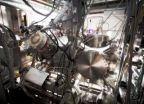(Press-News.org) An international group of scientists has identified three genetic regions that predispose Asian women who have never smoked to lung cancer. The finding provides further evidence that risk of lung cancer among never-smokers, especially Asian women, may be associated with certain unique inherited genetic characteristics that distinguishes it from lung cancer in smokers.
Lung cancer in never-smokers is the seventh leading cause of cancer deaths worldwide, and the majority of lung cancers diagnosed historically among women in Eastern Asia have been in women who never smoked. The specific genetic variations found in this study had not been associated with lung cancer risk in other populations.
Although environmental factors, such as secondhand smoke (also known as environmental tobacco smoke) or exhaust from indoor cooking are likely account for some cases of lung cancer among Asian women who have never smoked, they explain only a small proportion of the disease. To gain a better understanding of lung cancer in Asian female never-smokers, researchers from the National Cancer Institute (NCI), part of the National Institutes of Health, partnered with researchers from several other countries to create the Female Lung Cancer Consortium in Asia to conduct one of the largest genome-wide association studies (GWAS) in female never-smokers to date. GWAS compares DNA markers across the genome between people with a disease or trait to people without the disease or trait.
"This study is the first large-scale genome-wide association study of lung cancer among never-smoking females anywhere in the world," said Qing Lan, M.D., Ph.D., a senior investigator in NCI's Division of Cancer Epidemiology and Genetics, and the leader of the study.
The consortium, whose findings were reported Nov.11, 2012, online in Nature Genetics, conducted a GWAS that combined data from 14 studies that included a total of approximately 14,000 Asian women (6,600 with lung cancer and 7,500 without lung cancer). The studies included data on environmental factors, including exposure to secondhand smoke.
The consortium found that variations at three locations in the genome—two on chromosome 6 and one on chromosome 10—were associated with lung cancer in Asian female never-smokers. The discovery on chromosome 10 was particularly significant because it has not been found in any other GWAS of lung cancer in white or Asian populations.
"Our study provides strong evidence that common inherited genetic variants contribute to an increased risk of lung cancer among Asian women who have never smoked," said Nathaniel Rothman, M.D., a senior investigator in NCI's Division of Cancer Epidemiology and Genetics and coauthor of the study. "These variants may also increase lung cancer risk associated with environmental factors, such as environmental tobacco smoke."
The researchers did not detect an association with variations at a location on chromosome 15 that has been associated with lung cancer risk in many previous GWAS of lung cancer in smokers. The absence of this association provides further support for the suggestion that the genetic variation on chromosome 15 may be smoking-related.
The researchers found some evidence that Asian women with one of the newly identified genetic variants may be more susceptible to the effects of environmental tobacco smoke. However, the authors note that more research is needed to draw definitive conclusions from this observation.
"This study is an example of how genome-wide association susceptibility studies can evaluate inherited genetic risk in populations with unique characteristics or environmental exposures," said Stephen J. Chanock, M.D., acting co-director of NCI's Center for Cancer Genomics and a co-author of the study. "We will continue to develop better, smarter applications of this technique and apply them to populations where we have detailed information on environmental factors to further our understanding of how inherited genetic factors modify risk from environmental exposures."
INFORMATION:
This work was supported by NCI's Division of Cancer Epidemiology and Genetics under intramural project number ZIACP010121.
NCI leads the National Cancer Program and the NIH effort to dramatically reduce the burden of cancer and improve the lives of cancer patients and their families, through research into prevention and cancer biology, the development of new interventions, and the training and mentoring of new researchers. For more information about cancer, please visit the NCI Web site at www.cancer.gov or call NCI's Cancer Information Service at 1-800-4-CANCER (1-800-422-6237).
About the National Institutes of Health (NIH): NIH, the nation's medical research agency, includes 27 Institutes and Centers and is a component of the U.S. Department of Health and Human Services. NIH is the primary federal agency conducting and supporting basic, clinical, and translational medical research, and is investigating the causes, treatments, and cures for both common and rare diseases. For more information about NIH and its programs, visit www.nih.gov.
Reference: Lan Q, et al. Genome-wide association analysis identifies new lung cancer susceptibility loci in never-smoking women in Asia. Nature Genetics. November 11, 2012. doi: 10.1038/ng.2456.
Gene variations linked to lung cancer susceptibility in Asian women
2012-11-12
ELSE PRESS RELEASES FROM THIS DATE:
Detection, analysis of 'cell dust' may allow diagnosis, monitoring of brain cancer
2012-11-12
A novel miniature diagnostic platform using nuclear magnetic resonance (NMR) technology is capable of detecting minuscule cell particles known as microvesicles in a drop of blood. Microvesicles shed by cancer cells are even more numerous than those released by normal cells, so detecting them could prove a simple means for diagnosing cancer. In a study published in Nature Medicine, investigators at the Massachusetts General Hospital (MGH) Center for Systems Biology (CSB) demonstrate that microvesicles shed by brain cancer cells can be reliably detected in human blood through ...
Researchers discover 2 genetic flaws behind common form of inherited muscular dystrophy
2012-11-12
SEATTLE – An international research team co-led by a scientist at Fred Hutchinson Cancer Research Center has identified two genetic factors behind the third most common form of muscular dystrophy. The findings, published online in Nature Genetics, represent the latest in the team's series of groundbreaking discoveries begun in 2010 regarding the genetic causes of facioscapulohumeral muscular dystrophy, or FSHD.
The team, co-led by Stephen Tapscott, M.D., Ph.D., a member of the Hutchinson Center's Human Biology Division, discovered that a rare variant of FSHD, called type ...
Touch-sensitive plastic skin heals itself
2012-11-12
Nobody knows the remarkable properties of human skin like the researchers struggling to emulate it. Not only is our skin sensitive, sending the brain precise information about pressure and temperature, but it also heals efficiently to preserve a protective barrier against the world. Combining these two features in a single synthetic material presented an exciting challenge for Stanford Chemical Engineering Professor Zhenan Bao and her team.
Now, they have succeeded in making the first material that can both sense subtle pressure and heal itself when torn or cut. Their ...
36 in one fell swoop -- researchers observe 'impossible' ionization
2012-11-12
This press release is available in German.
Using the world's most powerful X-ray laser in California, an international research team discovered a surprising behaviour of atoms: with a single X-ray flash, the group led by Daniel Rolles from the Center for Free-Electron Laser Science (CFEL) in Hamburg (Germany) was able to kick a record number of 36 electrons at once out of a xenon atom. According to theoretical calculations, these are significantly more than should be possible at this energy of the X-ray radiation. The team present their unexpected observations in the ...
'Groundwater inundation' doubles previous predictions of flooding with future sea level rise
2012-11-12
Scientists from the University of Hawaii at Manoa (UHM) published a study today in Nature Climate Change showing that besides marine inundation (flooding), low-lying coastal areas may also be vulnerable to "groundwater inundation," a factor largely unrecognized in earlier predictions on the effects of sea level rise (SLR). Previous research has predicted that by the end of the century, sea level may rise 1 meter. Kolja Rotzoll, Postdoctoral Researcher at the UHM Water Resources Research Center and Charles Fletcher, UHM Associate Dean, found that the flooded area in urban ...
Game changer for arthritis and anti-fibrosis drugs
2012-11-12
(SALT LAKE CITY)—In a discovery that can fundamentally change how drugs for arthritis, and potentially many other diseases, are made, University of Utah medical researchers have identified a way to treat inflammation while potentially minimizing a serious side effect of current medications: the increased risk for infection.
These findings provide a new roadmap for making powerful anti-inflammatory medicines that will be safer not only for arthritis patients but also for millions of others with inflammation-associated diseases, such as diabetes, traumatic brain injury, ...
CSHL-led team discovers new way in which plants control flower production
2012-11-12
Cold Spring Harbor, N.Y. – Flowers don't just catch our eyes, they catch those of pollinators like bees as well. They have to, in order to reproduce. Because plants need to maximize the opportunity for pollinators to gain access to their seeds, variations in the timing of flowering can have profound effects on flower, fruit, and seed production, and consequently agricultural yields.
We know that the major driving forces of flowering are external factors such as light and temperature. However, new research from CSHL Assistant Professor Zach Lippman, Ph.D. and his collaborators, ...
Mutations in genes that modify DNA packaging result in Facioscapulohumeral Muscular Dystrophy
2012-11-12
A recent finding by medical geneticists sheds new light on how Facioscapulohumeral Muscular Dystrophy develops and how it might be treated. More commonly known as FSHD, the devastating disease affects both men and women.
FSHD is usually an inherited genetic disorder, yet sometimes appears spontaneously via new mutations in individuals with no family history of the condition.
"People with the condition experience progressive muscle weakness and about 1 in 5 require wheelchair assistance by age 40," said Dr. Daniel G. Miller, University of Washington associate professor ...
Study provides recipe for 'supercharging' atoms with X-ray laser
2012-11-12
Researchers using the Linac Coherent Light Source (LCLS) at the U.S. Department of Energy's (DOE) SLAC National Accelerator Laboratory have found a way to strip most of the electrons from xenon atoms, creating a "supercharged," strongly positive state at energies previously thought too low.
The findings, which defy expectations and theory, could help scientists deliberately induce the high levels of damage needed to study extreme states of matter or ward off damage in samples they're trying to image. The results were reported this week in Nature Photonics.
While the ...
Why Antarctic sea ice cover has increased under the effects of climate change
2012-11-12
The first direct evidence that marked changes to Antarctic sea ice drift have occurred over the last 20 years, in response to changing winds, is published this week in the journal Nature Geoscience. Scientists from NERC's British Antarctic Survey (BAS) and NASA's Jet Propulsion Laboratory (JPL), Pasadena California explain why, unlike the dramatic losses reported in the Arctic, the Antarctic sea ice cover has increased under the effects of climate change.
Maps created by JPL using over 5 million individual daily ice motion measurements captured over a period of 19 years ...





